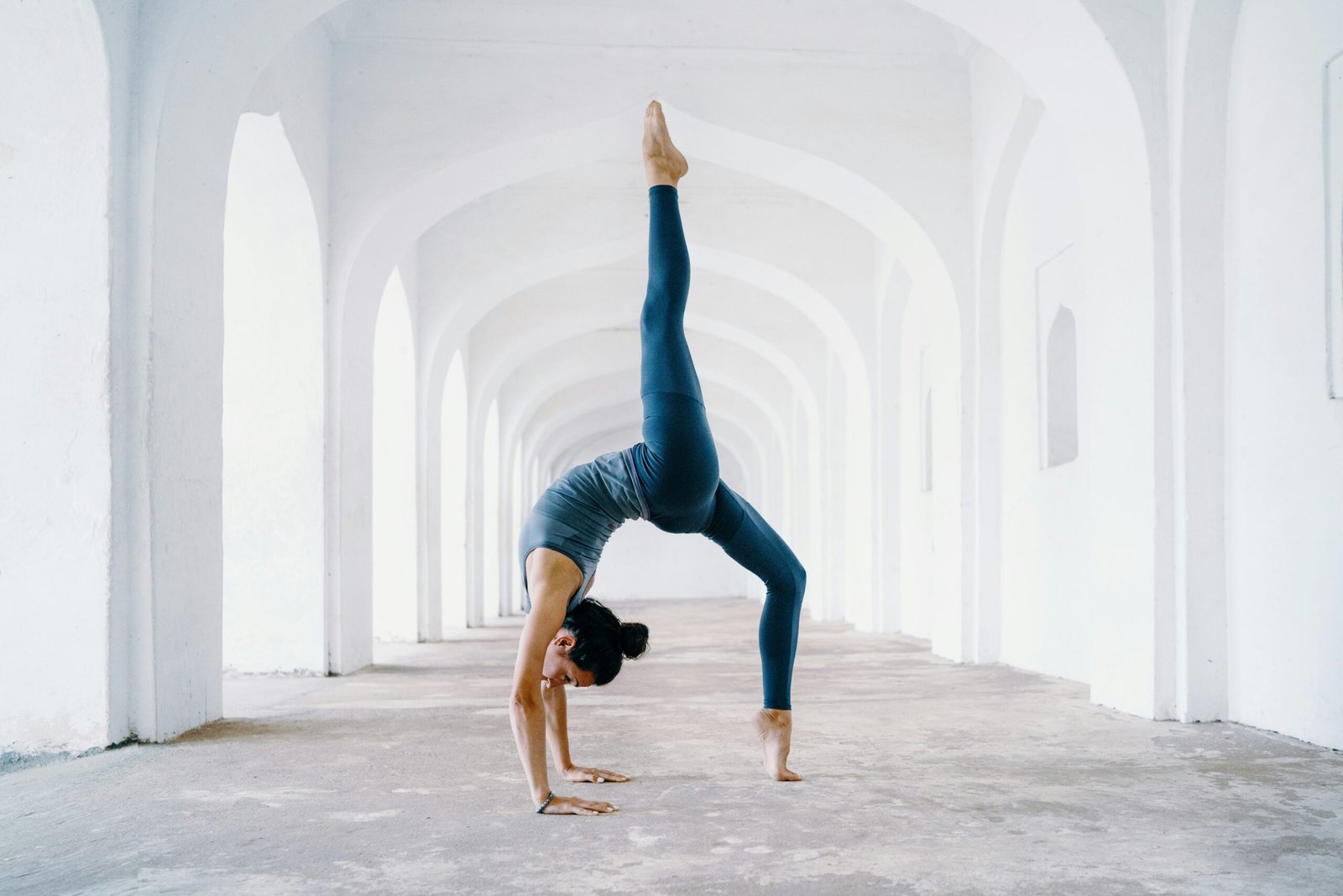Understanding Yoga: More Than Just a Physical Practice
Yoga is often perceived primarily as a series of physical postures, or asanas, practiced to enhance flexibility and strength. However, this perspective limits the comprehensive understanding of yoga as outlined in ancient Indian philosophy. Yoga is derived from the Sanskrit word “yuj,” which means to join or unite. This concept speaks to the essence of yoga, which aims to establish harmony between the body, mind, and spirit, fostering a sense of overall well-being.
The roots of yoga can be traced back over 5,000 years to ancient India, where it was initially developed as a spiritual and philosophical practice. Texts such as the Yoga Sutras of Patanjali outline principles that integrate ethics, meditation, and self-realization, emphasizing that yoga transcends mere physical exercise. The ancient sages understood that genuine wellness encompasses more than the body; mental clarity, emotional stability, and spiritual growth are equally pivotal in promoting a balanced life.
By engaging in regular yoga practice, individuals may find themselves becoming more attuned to their thoughts and emotions, fostering emotional intelligence and resilience. This holistic view of wellness emphasizes the interconnectedness of our physical abilities and our mental state. As various styles of yoga, from Hatha to Kundalini, gain popularity worldwide, practitioners increasingly adopt yoga as a lifestyle choice that instills mindfulness and intentionality in daily life.
Moreover, contemporary research supports that the benefits of yoga extend beyond the mat. Studies reveal that yoga can reduce stress, increase mindfulness, and improve overall emotional well-being, making it a valuable practice for people seeking to integrate greater awareness into their daily experiences. By embracing this deeper understanding of yoga, one can fully appreciate its role in enhancing not just physical health but also mental and spiritual dimensions, contributing to a more fulfilling and balanced existence.
The Daily Benefits of Practicing Yoga
Incorporating yoga into daily life offers numerous benefits that can significantly enhance overall well-being. One of the most notable physical advantages of regular yoga practice is increased flexibility. As yoga involves a range of postures and stretches, individuals can gradually improve their flexibility, which can lead to a greater range of motion and less risk of injury in everyday activities. Additionally, yoga strengthens various muscle groups, contributing to improved physical endurance and posture.
Mental benefits are equally important, with many practitioners reporting reduced stress levels after yoga sessions. The meditative aspects of yoga, combined with controlled breathing techniques, help individuals manage anxiety and promote mental clarity. This mental focus can lead to enhanced concentration in both work and personal life, allowing practitioners to navigate daily challenges more effectively. Furthermore, research indicates that engaging in yoga may help reduce symptoms of depression and anxiety, fostering a healthier emotional landscape.
On an emotional level, yoga cultivates a greater sense of inner peace, contributing to improved mood and emotional stability. Regular practice encourages mindfulness, helping individuals become more attuned to their thoughts and feelings. By promoting self-awareness, yoga enables practitioners to better manage their emotions and respond to life’s stresses in a more balanced manner. Even dedicating just a few minutes each day to yoga can yield transformative effects on one’s emotional state, fostering gratitude and contentment.
In essence, integrating yoga into a daily routine provides a holistic approach to health, combining physical, mental, and emotional benefits that collectively enhance an individual’s quality of life. As a practice that can be adapted to suit all fitness levels, yoga offers something for everyone, making it a valuable addition to modern lifestyles.
Integrating Yoga into Your Everyday Routine
In our fast-paced world, finding time for self-care can often feel overwhelming. However, integrating yoga into your daily routine can be both achievable and beneficial. One of the most effective ways to make yoga a part of your life is to curate short sessions that fit seamlessly into your schedule. Even five to ten minutes of dedicated yoga practice can yield positive results, enhancing physical and mental well-being.
To incorporate yoga into your busy lifestyle, consider utilizing short practices during breaks at work or while at home. Simple stretches or breathing exercises can be performed at your desk or in a quiet corner of your house. Poses such as cat-cow, forward bends, or seated twists can be executed in just a few minutes and help alleviate tension and stress. In addition to these physical practices, mindfulness can be interwoven with everyday tasks. Consider practicing mindful breathing while commuting or being present during routine activities like washing dishes or walking the dog. This not only enhances focus but also deepens your connection to the moment.
To create a consistent yoga routine, identify a time that works best for you. Whether it’s early morning, during lunchtime, or before bedtime, consistency is key to reaping the benefits of yoga. Setting reminders or scheduling it into a calendar can aid in developing this habit. Moreover, exploring different styles of yoga may keep your practice refreshing and motivating. Options like Yin Yoga for relaxation or Vinyasa Yoga for a more dynamic session can cater to varying preferences and lifestyles.
Ultimately, integrating yoga into your daily life is about making it accessible and enjoyable. By allocating modest amounts of time and mixing physical and mindfulness practices, everyone can experience the transformative power of yoga, irrespective of their schedule.
Personal Transformations: Real-Life Stories of Yoga Impact
The practice of yoga has garnered immense recognition for its role in facilitating personal transformations among its practitioners. Numerous individuals have shared their stories, highlighting how integrating yoga into their day-to-day lives has led to profound changes in various aspects, from health and relationships to mental clarity and purpose.
One such story comes from Sarah, a busy corporate executive whose life was often characterized by stress and fatigue. After discovering yoga through a local community class, she committed to practicing regularly. Over time, Sarah noticed a significant reduction in her stress levels, which positively impacted her productivity and interactions with colleagues. By incorporating breathing techniques and mindfulness into her daily routine, she experienced enhanced emotional stability and improved workplace relationships.
Another inspiring account is that of Raj, a retiree who had been struggling with mobility issues due to aging. Seeking relief from chronic pain, Raj turned to yoga as a low-impact exercise option. Through tailored yoga sessions focusing on flexibility and strength, he not only regained mobility, but also surprised his family with his newfound enthusiasm for life. His story is a testament to how yoga can provide not just physical health benefits, but also a renewed outlook on life.
Furthermore, testimonials from couples who practice yoga together illustrate the way it fosters deeper connections. Emily and Jake, who previously found their communication lacking, discovered that attending yoga classes helped them build trust and understanding. Through shared experiences on the mat, they learned to communicate more openly, enhancing their partnership significantly.
These real-life stories exemplify yoga’s potential to enrich lives in tangible ways. By integrating yoga into their daily routines, individuals have experienced meaningful transformations, proving that the practice is not just about physical postures but also about nurturing one’s mental and emotional well-being. Through these journeys, readers can find motivation to explore how yoga might similarly impact their own lives.
Read more: Transform Your Body & Mind with Meditation Classes, Yoga for Sedentary Lifestyle
Read more: The Connection Between Yoga, Health, Wellness, and Nutrition
Read more: Blue Light from Screens is Aging Your Skin
Our Services: Hatha Yoga Classes | Ashtanga Yoga Classes | Kids Yoga Classes | Pranayama Classes | Therapeutic Yoga for Thyroid Workshop | Therapeutic Yoga for PCOD/PCOS Workshop | Therapeutic Yoga for Diabetes Workshop | PostNatal Yoga | PreNatal Yoga
Other Calculator: Bmr Calculator | Gst Calculator | Date Of Birth Calculator | Calorie Calculator | Loan Calculator | Home Loan Calculator | Sukanya Samriddhi Yojana Calculator | Mileage Calculator | Interest Calculator | Compound Interest Calculator | Cumulative Interest Calculator | Rd Calculator | Days Calculator | Income Tax Calculator | Fd Calculator | Swp Calculator | Personal Loan Calculator | Mutual Fund Calculator | Square Root Calculator | Irr Calculator | Future Value Calculator | Currency Calculator | Margin Calculator | Bmi Calculator | Date Calculator | Age Calculator | Salary Calculator | Calculator Online | Body Type Calculator | Fraction Calculator | Percentage Calculator | Time Calculator | Bmi Index Calculator | Body Shape Calculator | Free Calculator | Indian Salary Calculator | Fraction Calculator | Body Type Calculator | Date to Date Calculator | Percentage Calculator | Car Loan EMI Calculator | Time Calculator | Age Calculator | BMI Calculator | Bmr Calculator | Calorie Calculator | Bmi Calculator | Body Type Calculator | Bmi Index Calculator | Body Shape Calculator . Also Buy: Hanuman Ji Parvat Image | Hanuman Parvat Image | Janam Patrika Format Pdf | Switch Words For Success | Horse Frame Direction | Elephant Photo Frame | Elephant Photo Vastu | Sheaxis | Himalayan Healings | Yogic Warrior | Ayurvedic Homeopathic | Free Calculator | The Calculator Site | Calculator Online | Travel Story | Kundli Print | Printed Kundli | Vastu Photo Frame | Tarot Card Reading | Glycemic Index Calculator | surya namaskar 12 steps | Aerial Yoga at Home | Hatha Yoga Poses






